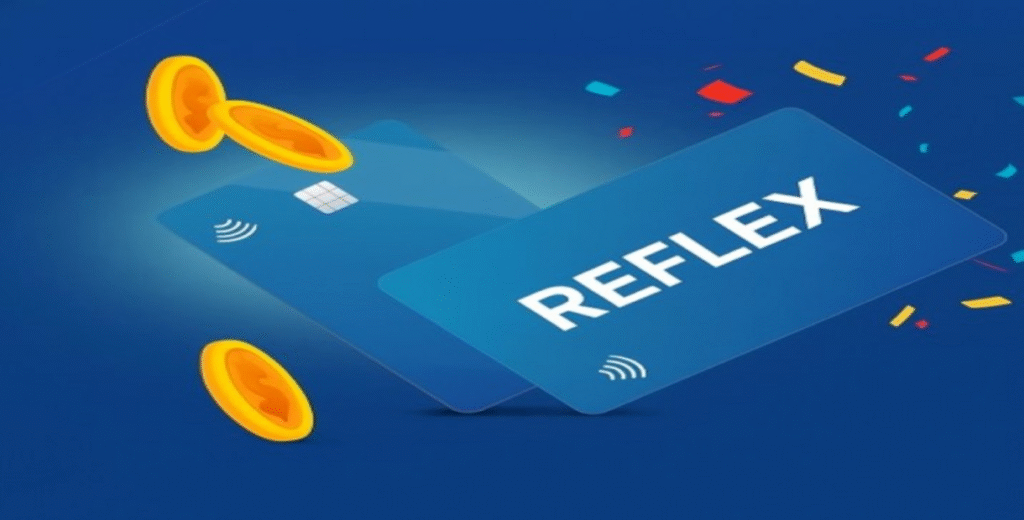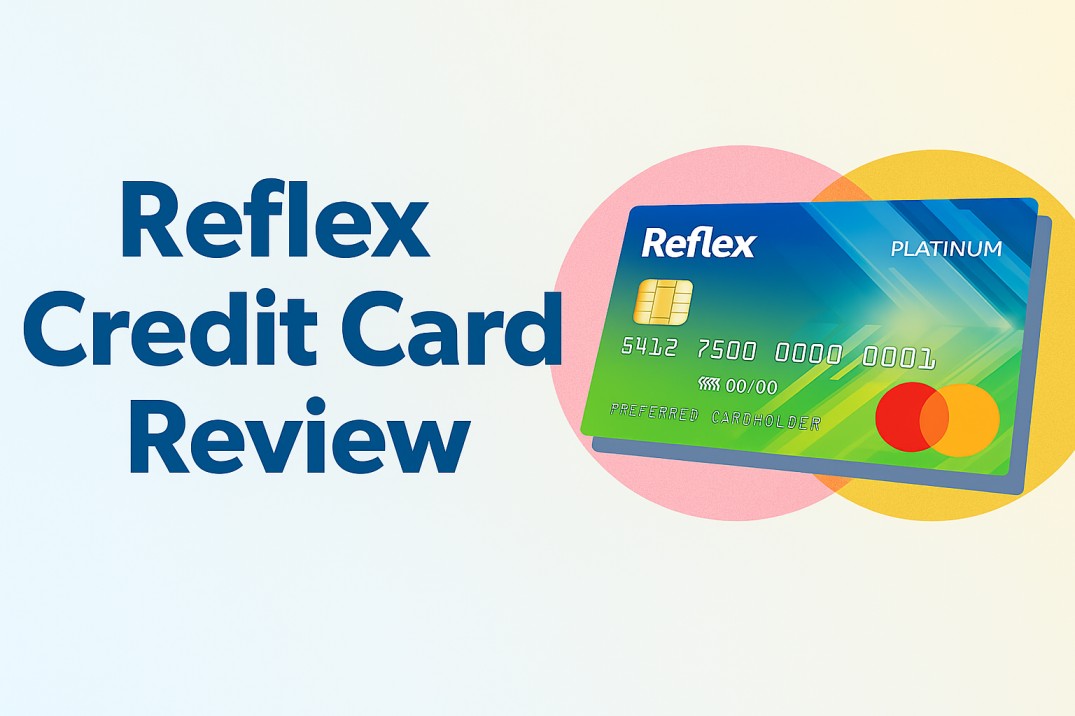If you’re dealing with bad credit or no credit history, chances are the Reflex Credit Card has shown up in your search results as a possible solution. It’s often marketed as a fast way to rebuild your credit without needing a security deposit. But while the approval odds may seem appealing, there’s a long list of fees and limitations that come with the offer. This Reflex Credit Card Review takes a closer look at what you’re really signing up for, covering everything from credit limits and application requirements to the hidden costs and better alternatives that might save you money.
If you’re considering applying, it’s important to understand exactly how the card works before you jump in. From who issues it to how it helps (or hurts) your credit, getting the full picture can help you avoid surprises later. Let’s start by breaking down what the Reflex Credit Card actually is, who it’s backed by, and why it’s often marketed to people trying to rebuild their credit from the ground up.
What Is the Reflex Credit Card?
The Reflex Mastercard is an unsecured credit card issued by Celtic Bank and managed by Continental Finance. It’s meant for people with bad credit or limited credit history who want to start fresh without putting down a deposit.
You can prequalify online through a soft credit pull, so there’s no risk to your credit score just to check. If approved, you’ll get an initial credit limit between $300 and $1,000—though many cardholders start with a $500 limit—with the chance to double it after months of on time payments.
Expect the card in the mail within 7 to 10 business days if approved. Just be aware: the monthly fees and other charges hit hard and fast.
Who Is This Card For?
This card targets:
- Applicants with credit scores under 600
- People who’ve been denied by other issuers
- Anyone who can’t afford a secured deposit
- People looking to build credit with all three major credit bureaus
It’s not for rewards, perks, or long-term use—it’s for rebuilding credit, plain and simple. Their card serves a very specific purpose: to give people with limited or damaged credit histories a way to show positive payment behavior over time.
That means it’s best suited as a short-term stepping stone rather than a card you keep for years. If you manage it responsibly—making every payment on time and keeping your balance low—you can use it to improve your credit profile and eventually qualify for cards with lower fees, better terms, and actual benefits. But if you’re looking for travel points, cashback programs, or premium features, this isn’t the card to deliver them.
Now let’s take a look at what this means in practical terms. Like any financial product, the Reflex card has its upsides and downsides, and knowing both can help you decide if it’s worth adding to your wallet. Here’s a breakdown of the main advantages and drawbacks.

Reflex Credit Card Pros and Cons
✅ Pros
- No deposit required
- Reports to all major credit bureaus
- Prequalification available with no score impact
- Possible credit limit increase after 6 months
- Accepts bad credit applicants
❌ Cons
- Annual fee up to $125
- Monthly maintenance fee of up to $12.50 after year one
- High APR: 35.90% fixed
- $30 to add an authorized user
- 3% foreign transaction fee
- Requires a checking account
- No mobile app
- No rewards or welcome bonus
⚠️ Reminder: That monthly fee applies even if you don’t use the card. You’ll always owe something, which increases the risk of late fees or missed monthly payments.
Reflex Credit Card Fees Breakdown
| Fee Type | Amount |
| Annual Fee | $75–$125 (year one), up to $125 |
| Monthly Maintenance | Up to $12.50/month (after year one) |
| APR | 35.90% fixed |
| Foreign Transaction | 3% per transaction |
| Authorized User Fee | $30 |
| Late Payment Fee | Up to $41 |
| Returned Payment Fee | Up to $41 |
Let’s say your starting limit is $300. If you’re charged a $75 a yearly fee, your available credit drops to $225 before you swipe. Add an authorized user? You’re down to $195.
How It Helps Build Credit
The Reflex Credit Card reports to Experian, Equifax, and TransUnion. To use it effectively:
- Make monthly payments on time
- Stay under 30% of your limit
- Never miss your due date
Over time, this responsible use can improve your credit score and open the door to better cards. Once you reach that point, you’ll likely have more than one card to choose from. That’s where a free tool like Karma can be useful. It tells you, in real time, which of your existing cards will give you the most cashback, points, or rewards for a specific purchase. This way, you’re not just building credit, but also getting the most value from it.
Is reflex a good credit card?
It depends on your goals. For some, it’s a limited option that offers a way in when everything else has failed. But it comes with tradeoffs.
- No mobile app
- No perks or rewards
- High fees—even if you barely use it
- Brutal APR if you carry a balance
If you’re stuck and need to apply for a card to build history, it might do the job. But it’s not built for comfort or flexibility.
Credit Limits and Increases
- Initial limits range from $300 to $1,000
- Potential increase to $2,000 after 6 months
- Fees deducted upfront lower your usable credit
You start small, and the fees make it even smaller. As your limit grows or you add other cards to your wallet, choosing which one to use becomes more than just picking the card with the most room left.
Reflex Credit Card Application Process
To apply, head to the Reflex website and submit the pre-approval form. You’ll need:
- A valid checking account
- Proof of ID and address
- Social Security number
If approved, you’ll get a decision within minutes, and the card in the mail within 7 to 10 days.
How to Pay Your Reflex Credit Card
- There’s no Reflex credit card app, so payments must be made via the Continental Finance website, phone, or by mail.
- Set payment reminders—between the monthly maintenance fee and yearly fee, there’s always something due.
- Don’t carry balance—the interest alone will wipe out any benefit of using the card.
Better Alternatives to Reflex
Looking to build credit with fewer traps? Try these instead:
1. Discover it® Secured
- $0 annual fee
- Cashback on every purchase
- Refundable deposit
- Free credit score access
2. Capital One Platinum Secured
- No monthly fees
- Deposits as low as $49
- Upgrade path to unsecured credit card
3. Chime Credit Builder Visa®
- No interest
- No credit check
- Reports to all major credit bureaus
If you do end up with one of these alternative cards or already have a few in rotation using them strategically can make a noticeable difference.
Karma helps by showing, in real time, which of your existing cards will give you the highest cashback, points, or rewards for the specific purchase you’re about to make. It’s not about finding new card offers or boosting your rewards program, but making the most of the cards you already have. By picking the right card for each transaction, you ensure you’re squeezing the most value from your wallet without changing what’s in it.
Reflex Credit Card FAQs
Final Thoughts: Reflex Credit Card Review
The Reflex Mastercard isn’t a top-tier product, but for people with limited options, it can be a stepping stone. You’ll be dealing with:
- High monthly fees
- A bare-bones interface (no app)
- High APR if you carry a balance
That said, if you’re rebuilding and your only other option is nothing—this card might serve a short-term purpose. Just make sure you:
- Use it to build credit
- Never carry a balance
- Plan to move on after a few months of on time payments
Before making your choice, it’s worth trying a tool like Karma. Instead of pushing new credit card offers, Karma analyzes the cards you already have and shows you, in real time, which one will give you the best rewards, cashback, or points for the purchase you’re about to make. It’s an easy way to get more value from your existing wallet without opening another account.
We hope you get to learn more in our Reflex Credit Card Review, and that the details we’ve covered give you a clearer picture of how this card works in real life—not just on paper. Taking the time to research now can prevent costly mistakes later, especially if you’re rebuilding credit and every decision counts. By weighing the pros, cons, and alternatives before applying, you’re putting yourself in a better position to choose a card that truly supports your financial goals.














